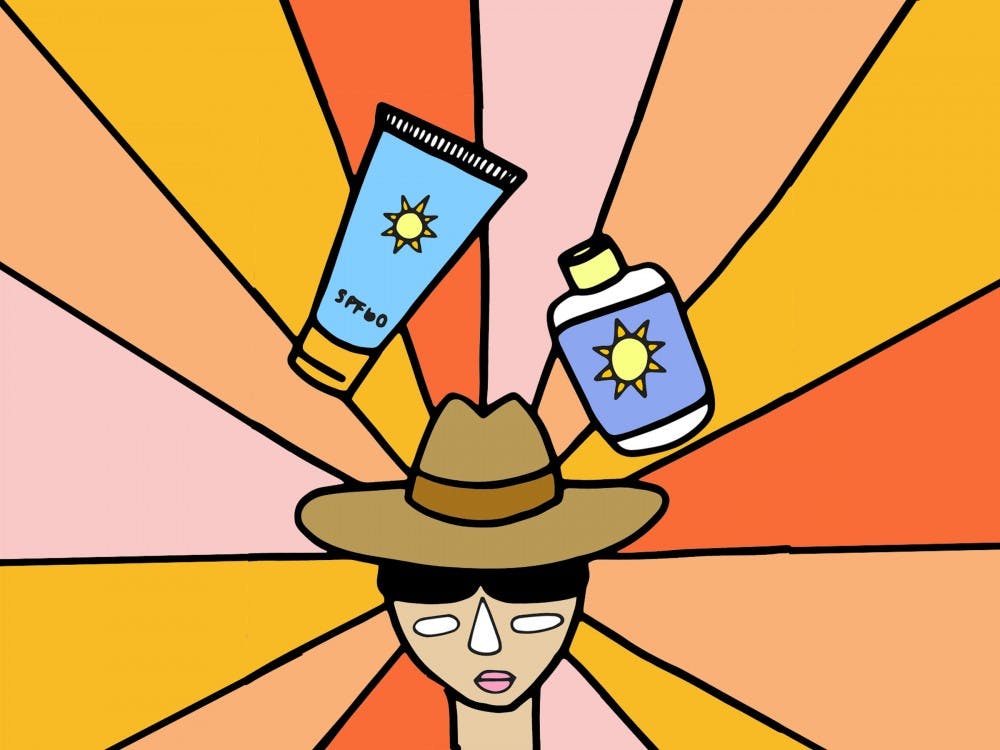Being outside and in the sun is a day-to-day occurrence. Being in the shade on a sunny day, however, is not an easy task.
Especially for college students, who tend to spend large amounts of time outdoors between walking or biking to class, athletic and social events, staying in the shade becomes nearly impossible.
For desert-dwelling Arizonans, sunshine is so abundant and commonplace that it is extremely easy to overlook it as a potential health risk.
At a school as large as ASU, students have no choice but to spend their days in the sun. For most, it takes approximately 15 minutes to get from point A to point B on campus, whether they are biking, skateboarding or walking.
Although these trips are extremely brief, from this alone the average student probably achieves his or her 10,000 steps with ease.
“The weather is great most of the year and you get to be outside and enjoy the sun," Dr. James Pehoushek, a dermatologist at Allergy & Dermatology Specialists, said. "People come to Arizona for the good weather and the good education. However, sun exposure gets cumulatively troublesome and they develop skin cancer at a later age.”
A multitude of diseases and conditions are deemed as “silent killers,” skin cancer being one of them.
Sun exposure, however, is not exclusively an Arizona problem. There also exists a cultural fixation on active “outdoorsy” lifestyles and tan skin, for which the media definitely plays a role.
“There is a social image to looking tan," Dr. Pehoushek said. "Celebrities like Nicole Kidman and Emma Stone are very pale, which is probably a more healthy look. But living in the southwest, people want to look tan. Victoria’s Secret girls don’t look pasty or pale. There’s a misconception that tan equates to healthy.”
According to the National Health Interview Survey, college-aged individuals from 18 to 21 years old had the highest propensity to tan, comprising 32 percent of the total population of individuals who engaged in indoor tanning in 2010.
“Most of my patients who come into see me have terrible sun damage from when they were kids, and they just didn’t know better," Dr. Pehoushek said. "A lot of them did it because they wanted a healthy-looking tan, which actually leads to leathery-looking skin later in life."
ASU itself has taken initiative in enforcing healthy habits in student lives. Within a year following ASU’s acquisition of the Vista del Sol apartment complex, it removed the tanning beds from the complex, thus making the risks associated with indoor tanning less accessible to students.
Several popular lifestyle media such as Cosmopolitan and Buzzfeed also advocate against tanning, either through offering safer alternatives or satirical shock factor.
“For the people who want the look but don’t want the skin damage, there’s spray-on tan,” Dr. Pehoushek said. “Even tanning salons with beds offer spray tan.”
Just as casual absentmindedness can become long-term detriments, students can make subtle lifestyle adjustments such as wearing broad-spectrum sunscreen to protect against both types of ultraviolet radiation. Students can also wear SPF clothing or even something as simple as a hat to protect against these rays.
The cultural pressure to tan, although seemingly innocuous, is the cultural pressure to engage in health-risky behavior.
There is no reason why ASU Sun Devils need to become Sunburnt Devils when they can instead be Sun-protected Devils.
Reach the columnist at kalbal@asu.edu or follow @karish2021on Twitter.
Editor’s note: The opinions presented in this column are the author’s and do not imply any endorsement from The State Press or its editors.
Want to join the conversation? Send an email to opiniondesk.statepress@gmail.com. Keep letters under 500 words and be sure to include your university affiliation. Anonymity will not be granted.
Like The State Press on Facebook and follow @statepress on Twitter.




